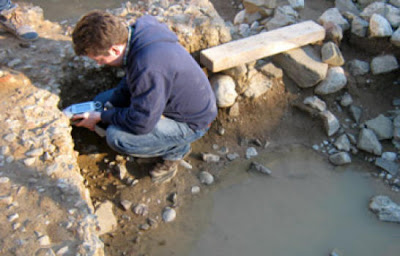Researchers at the University of Sheffield have developed a method of sourcing obsidian artefacts that takes only 10 seconds -- dozens of times faster than the current methods -- with a handheld instrument that can be used at archaeological excavations.
 |
| Dr Ellery Frahm using pXRF [Credit: University of Sheffield] |
The chemistry of obsidian varies from volcano to volcano, and the chemical "fingerprints" allow researchers to match an obsidian artefact to the volcanic origin of its raw material. The chemical tests often involve dedicated analytical laboratories, even nuclear reactors, and take place months or years after an archaeological site has been excavated.
Read the rest of this article...
No comments:
Post a Comment
Note: Only a member of this blog may post a comment.